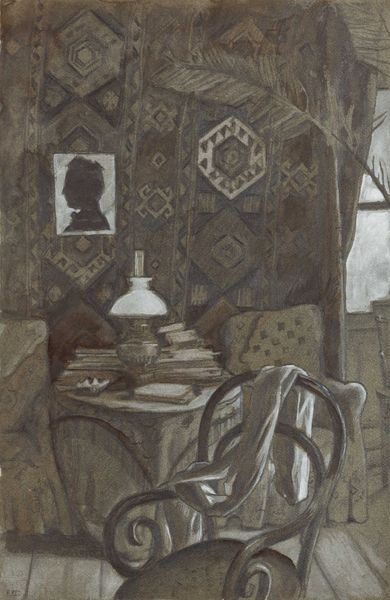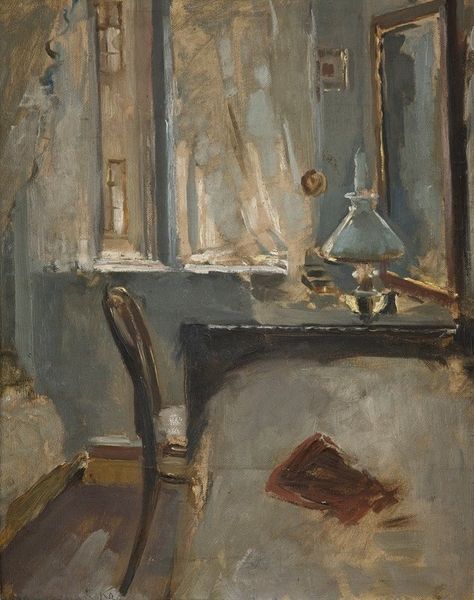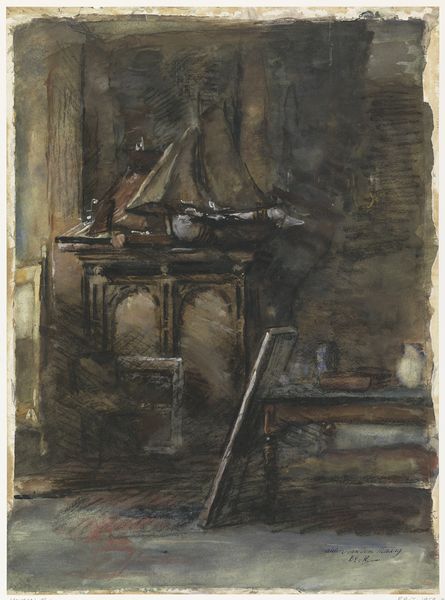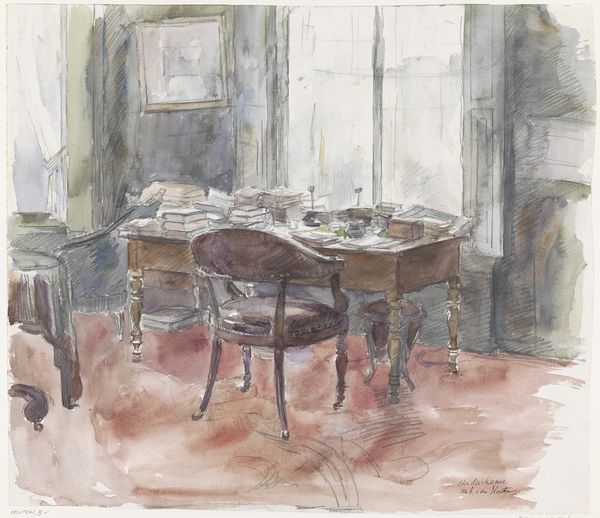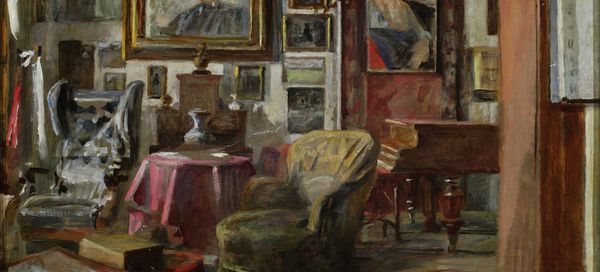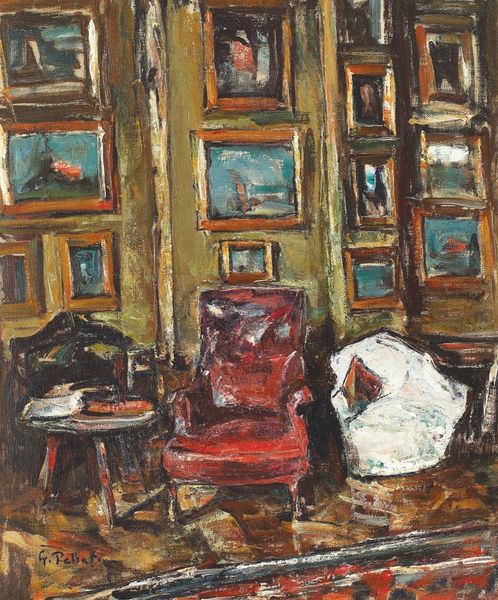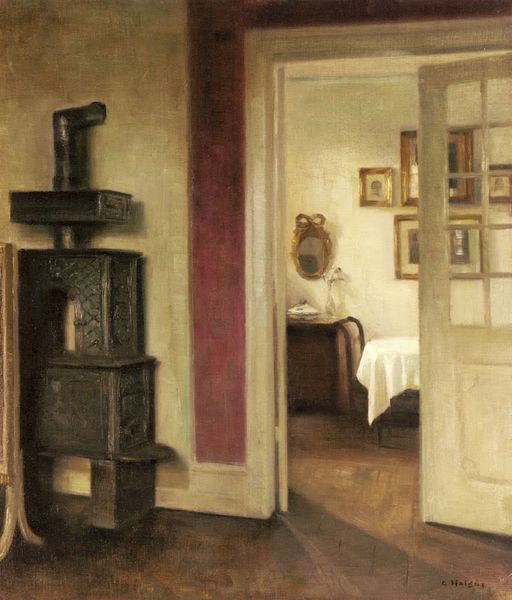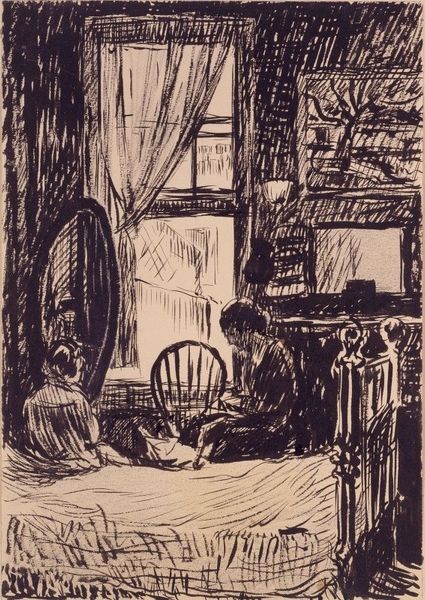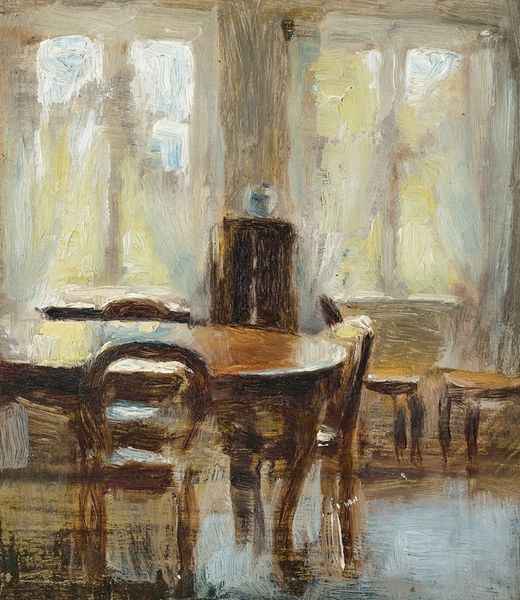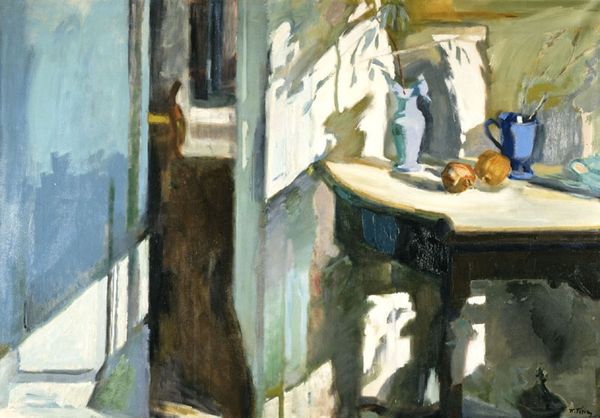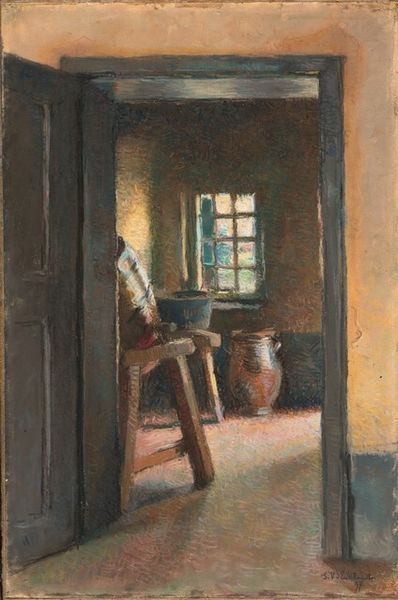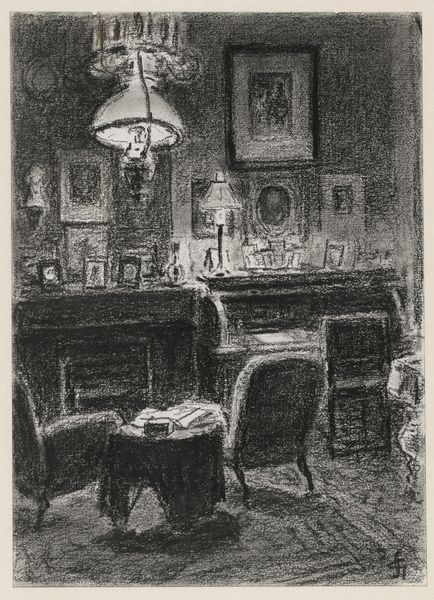
#
sculpture
#
charcoal drawing
#
possibly oil pastel
#
charcoal art
#
oil painting
#
unrealistic statue
#
acrylic on canvas
#
earthy tone
#
underpainting
#
charcoal
Dimensions: 150 x 100 cm
Copyright: Oleg Holosiy,Fair Use
Curator: This is Oleg Holosiy’s "Interior," painted in 1991. It's described as oil on canvas, though it feels more like a charcoal drawing to me. It strikes me as quite somber; a room drained of its color and vitality. What are your initial impressions? Editor: I’m struck by the stillness and the muted palette, almost monochrome. There’s a quiet emptiness to the scene. What do you see in this piece in terms of its historical or cultural context? Curator: Well, considering the date, 1991, Holosiy painted this right at the cusp of the Soviet Union's collapse. Think about that sociopolitical upheaval – the uncertainty, the anxieties of a society undergoing a radical transformation. I see that reflected in the starkness and sense of abandonment within this interior. It’s not just a room; it’s a stage. Where’s the action? Where are the figures we expect in an interior scene? Editor: That makes sense. It’s like the room is waiting for something, or someone. Are the shrouded objects deliberate? Are they a critique of something? Curator: Precisely. Notice how the furniture is draped, almost ghostlike. Those could be interpreted as symbols of the past being deliberately covered up or concealed. Perhaps even a commentary on the deliberate obfuscation employed within totalitarian societies. The dramatic play of light and shadow underscores this sense of mystery, of hidden meanings. Editor: So, the artist uses the "interior" as a setting to comment on a wider political stage? Curator: Yes, by stripping away the comfort and vibrancy typically associated with interior scenes, Holosiy presents a space laden with the weight of history, reflecting the instability and anticipation of the unknown that permeated Ukraine at the time. What does the title, "Interior," do for you now? Editor: It highlights the contrast between the mundane and the monumental, that an "interior" can carry the weight of political change. I see how the painting can reflect this time and all the changes that came with it. Curator: Exactly! It demonstrates how the personal and public intersect within art, informing our understanding of history. Editor: I now understand how deeply intertwined history, art and socio-political contexts can be. Thank you! Curator: A pleasure! It is often rewarding to view artwork under differing perspectives.
Comments
No comments
Be the first to comment and join the conversation on the ultimate creative platform.
